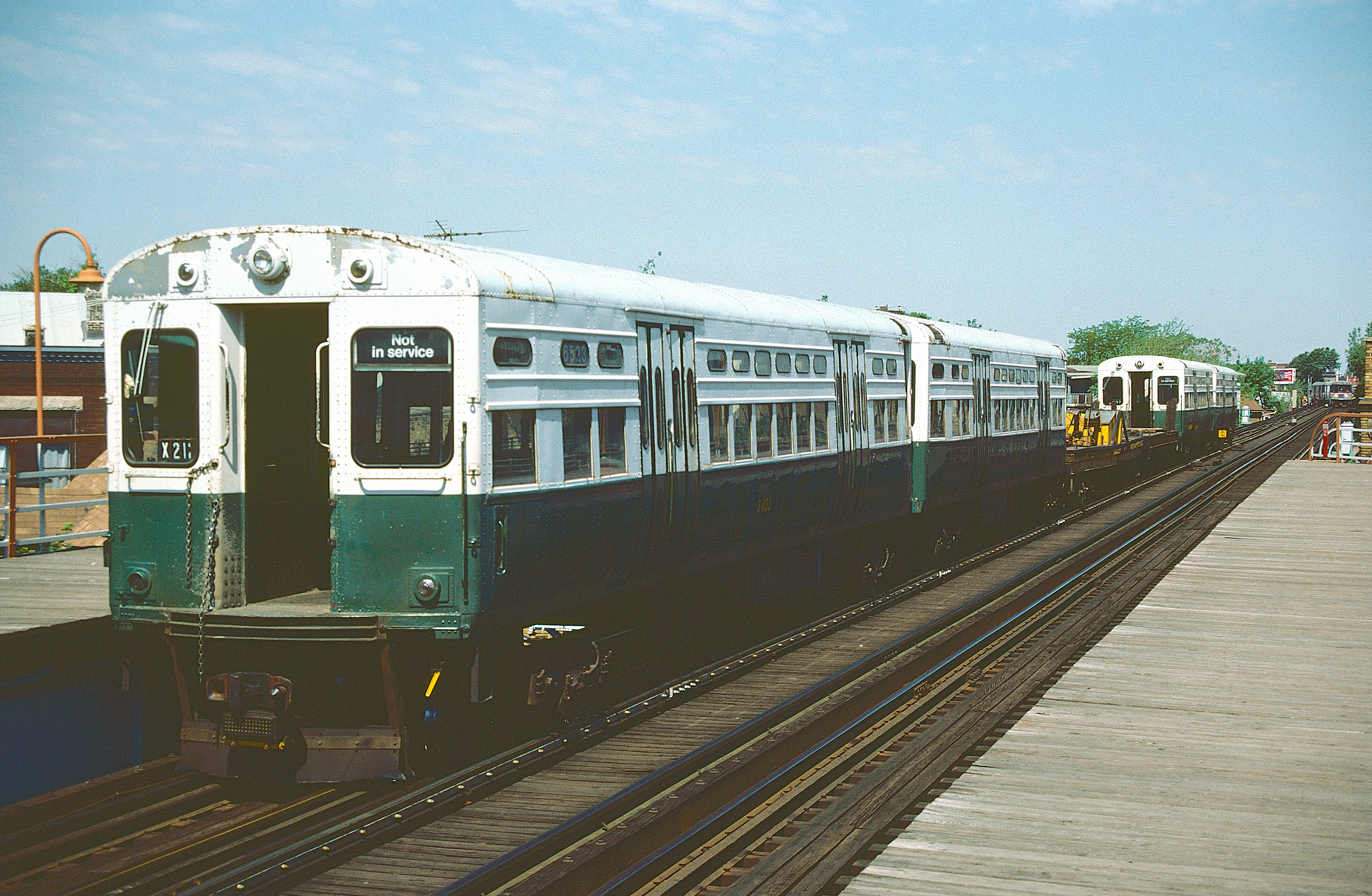|
6000-series (CTA)
The 6000-series was a series of "L" cars built between 1950 and 1959 by the St. Louis Car Company for the Chicago Transit Authority. A total of 720 cars were produced, and remained in operation on the "L" until 1992. Design In 1947–1948 the Chicago Transit Authority received four three-car articulated trainsets, 5001–5004, to test PCC technology in rapid transit use. Two sets of cars were built by Pullman, two by St. Louis Car, with equipment supplied by competing suppliers, in order to test them directly against each other. The 6000-series was designed with knowledge from the 5000-series. The design would influence the G series for the Toronto subway. Bodies 5000-series bodies had a curved profile previously used by North Shore Line and then Chicago, Aurora & Elgin cars which operated on the "L". The floor width was the needed for platform clearance, then above the sides curved outward, so the car was wider at seat level. This profile was used, 6000-series cars were ... [...More Info...] [...Related Items...] OR: [Wikipedia] [Google] [Baidu] |
Brown Line (CTA)
The Brown Line (or the Ravenswood Line) of the Chicago "L" system, is an route with 27 stations between Chicago's Albany Park neighborhood and downtown Chicago. It runs completely above ground and is almost entirely grade-separated. It is the third-busiest 'L' route, with an average of 19,255 passengers boarding each weekday in 2021. Before CTA lines were color-coded in 1993, the Brown Line was known as the Ravenswood Route; specifically, the series of stations from Belmont to Kimball were called the Ravenswood branch. Accordingly, the Kimball-Belmont shuttle service was called the Ravenswood Shuttle. Route The Brown Line begins on the northwest side of Chicago, at the Kimball terminal in Albany Park, where there is a storage yard and servicing shop for the trains to the east of the passenger station. From there, trains operate over street level tracks between Leland and Eastwood Avenues to , then ramp up to the elevated structure for the rest of the trip. The trains on ... [...More Info...] [...Related Items...] OR: [Wikipedia] [Google] [Baidu] |

